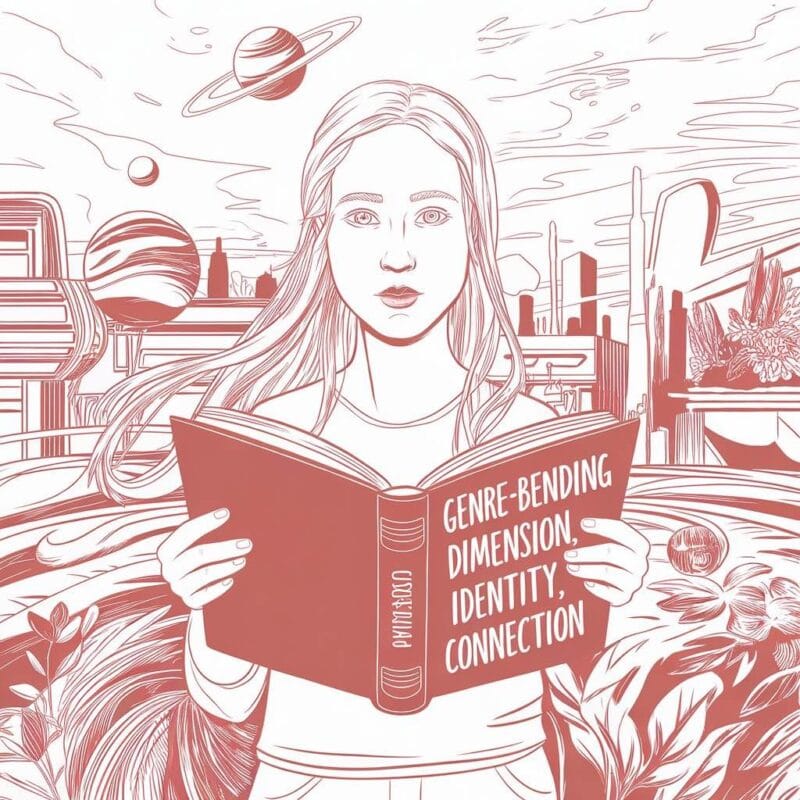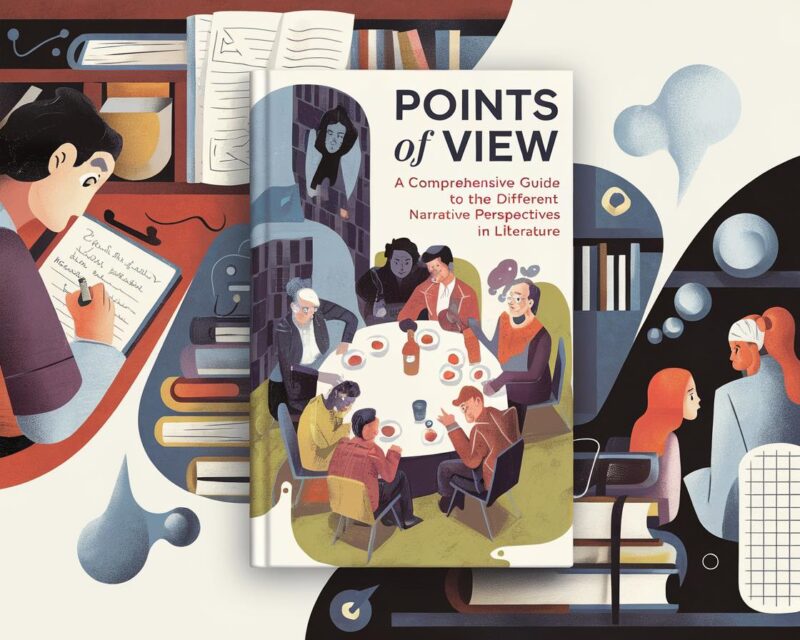- Character analysis in literature involves examining traits, roles, and developments to understand motivations and narrative impact. This method provides insights into why characters make certain choices, enhancing comprehension of the story’s broader themes.
- Key aspects of character analysis include:
– Character Type and Function: Identifying whether characters are dynamic (evolving) or static (unchanging), and their roles as protagonists, antagonists, or supporting figures
– Characterization Techniques:
— Direct Characterization: Explicit descriptions provided by the narrator or other characters
— Indirect Characterization: Traits revealed through actions, dialogue, and thoughts
– Character Foils: Contrasting characters to highlight specific qualities of the protagonist
– Conflict and Relationships: Interactions between protagonists and antagonists that drive the plot and reveal core themes - By focusing on actions, dialogue, and personal growth, readers can better understand character motivations and development. Character arcs, influenced by conflict, illustrate transformation or consistency, contributing to the narrative’s thematic depth.
In literature, character analysis entails examining character traits, roles, and developments throughout the plot. This technique highlights characters’ motivations and transitions, allowing for a more in-depth comprehension of the narrative. Character analysis provides a lens through which readers can examine how and why characters make their choices within the story.
Character analysis often begins by looking at the character type and their function in the narrative. By understanding characters’ relationships, motivations, and conflicts, readers gain insight into the story’s broader themes. This analysis can encompass the evolution of the characters over time, as well as the moral or message they convey through their actions or experiences.
Literary works provide rich sources for character analysis, as they often reflect complex human behaviors and motivations. A well-designed thesis statement can anchor this exploration by presenting a focused argument about the character’s role and significance. Through this investigation, readers can appreciate not just the storyline but the intricate details that shape the characters’ journeys.
Understanding Character Analysis

First, we need to understand what “characterization” is all about. It is a method that entails the techniques used by authors to reveal a character’s personality, values, and motivations. This process is achieved through direct methods, such as explicit descriptions, and indirect methods, where traits are revealed through actions, speech, or thoughts.
Direct characterization provides clear details about the character, while indirect characterization allows readers to infer characteristics through behavior and interactions. Recognizing these methods can enhance appreciation of both major and minor characters.
Character’s Role in Narrative
Characters can serve multiple purposes within a story. Major characters often drive the narrative forward and undergo significant development, acting as both protagonists and antagonists. In contrast, minor characters offer support, providing context, depth, or comic relief.
Identifying a character’s role helps to understand their importance and impact on the plot. Dynamic characters evolve throughout the story, demonstrating change in personality or perspective, while static characters maintain consistency, offering stability or contrast within the narrative arc.
Types of Characters
Literature features a variety of character types, each serving distinct functions. Dynamic characters exhibit growth and change, often central to the story’s evolution. Conversely, static characters remain unchanged, providing a constant reference point.
Stock characters are archetypal figures commonly found in many stories, such as the hero or villain, characterized by predictable traits. Understanding these types allows for deeper exploration of how characters contribute to narrative themes and reader engagement. The interactions between different character types can significantly affect plot development and thematic expression.
Characterization Techniques
Characterization techniques bring depth to literary creations by revealing characters’ traits, motivations, and roles. Understanding these techniques helps readers comprehend the functions and significance of both main and supporting characters.
Direct vs. Indirect Characterization
Direct characterization involves explicitly describing a character’s traits through straightforward details provided by the narrator or another character. This technique offers clarity by directly informing readers about characters’ backgrounds, personalities, or appearances.
Indirect characterization, on the other hand, reveals traits through actions, dialogue, or thoughts. This method allows readers to infer characteristics, creating a richer reading experience. Through indirect cues embedded in storytelling, readers discern a character’s intentions, emotions, and relationships. Both techniques, when effectively combined, offer a multidimensional perspective on characters, making them more relatable and memorable.
Character Foils
Character foils are used to highlight particular qualities of a protagonist by presenting them alongside a contrasting character. Typically, foils differ significantly in key traits or decisions, which underscores specific attributes in the main character.
This contrast illuminates strengths or weaknesses, adding complexity. For example, if a protagonist is indecisive, a decisive foil accentuates this trait. The use of foils is pivotal in emphasizing core aspects and driving thematic exploration. By examining these dynamics, readers gain insights into characters’ motivations and the broader narrative.
The Role of Supporting Characters
Supporting characters, including stock characters like confidantes or mentors, play vital roles in narrative development. Though not central to the plot, they aid in the protagonist’s journey or theme exploration.
Mentors often provide guidance, influencing character growth. Stock characters offer familiar archetypes that ground the story. Through interactions with supporting characters, protagonists encounter challenges and opportunities for change. These relationships enrich the storyline, contributing to a cohesive understanding of central themes and objectives. Understanding the roles that these characters play deepens one’s appreciation of their contributions to the narrative.
Analyzing Protagonists and Antagonists

In literature, protagonists drive the story forward, often facing challenges set by antagonists. The dynamic between these characters shapes the narrative structure and highlights core themes.
Identifying the Protagonist
The protagonist serves as the central character in a narrative. Typically, they are the focal point of the story’s conflict and growth. In works like the Harry Potter series and Robinson Crusoe (1719), protagonists embark on personal journeys that reveal their character traits, motivations, and values.
Recognizing the protagonist involves identifying who experiences the main conflict and undergoes significant change. They are often, but not always, relatable figures who face obstacles and evolve over the course of the story. Observing how the protagonist interacts with other characters and the plot can offer insights into their role and importance.
Understanding the Antagonist
Antagonists are characters or forces that oppose the protagonist, creating conflict. Their role is crucial in challenging the protagonist, thereby moving the plot forward. In stories like Little Red Riding Hood, the antagonist is the wolf, a figure that symbolizes danger and opposition.
Antagonists can be individuals, societal standards, or even internal doubts. It is essential to analyze what they represent and how they conflict with the protagonist’s goals. This examination reveals not just character dynamics but also underlying themes the author wishes to explore, such as good versus evil or man versus nature.
Conflict and Relationships
The relationship between protagonists and antagonists is central to the narrative. Their interactions generate tension and drama, which are key components of any compelling plot. Protagonists must navigate these interactions to achieve their goals, while antagonists actively work to thwart them.
Conflict often arises from differing motivations and desires. For example, in Harry Potter, the ongoing battle between Harry and Voldemort is both personal and ideological. Understanding these relationships helps readers appreciate the complexities of the story and the evolution of its characters. Relationships can be direct confrontations or subtle psychological contests, each adding layers to the narrative framework.
Detailed Character Examination
When examining a character in literature, it is important to focus on their actions, dialogue, and personal growth. These elements provide insights into the character’s motivations and development throughout the story. By concentrating on these aspects, readers can better understand a character’s role and evolution within the narrative.
Actions and Motivations
A character’s actions are central to understanding their motives. Readers should pay attention to significant events and decisions. Actions often reflect conscious choices and can reveal inner conflicts or desires. Analyzing how a character behaves in different situations can provide insights into their motivations.
For example, a character who consistently helps others might be driven by compassion or a desire for redemption. Creating a list of key actions and considering the circumstances can aid in deciphering the underlying motivations. Look for patterns in behavior to identify persistent goals or fears influencing their actions.
Dialogue and Language
Dialogue shapes character perception and underscores their personal traits. The way a character speaks—including their word choice, tone, and style—can reflect their background, intellect, or emotional state. Noting specific phrases or language patterns is important.
For instance, a character who frequently uses formal language might come from an aristocratic background or seek to assert authority. Short, terse replies could suggest discomfort or a desire to withhold information. Analyzing language with attention to these details can provide deeper insight into the character’s identity and position within the story.
Personal Growth and Transformation
Personal transformation is a key aspect of a thorough character examination. Observing how a character changes throughout the narrative can reveal underlying themes. Look for pivotal moments representing change.
Character growth may involve overcoming flaws, altering beliefs, or evolving through relationships and experiences. A character who starts as self-centered but eventually learns empathy illustrates profound transformation. Tracking these changes helps highlight important story arcs and gives perspective on the character’s final state. Identifying growth also plays a role in understanding the impact of events throughout the story.
Character Development and Arcs
Character development refers to the transformation or evolution of characters over time within a narrative. A character arc is a specific aspect of development, illustrating the changes a character undergoes. This section explores the contrasts between dynamic and static characters, the nuances of character arcs, and the importance of conflict in character growth.
Dynamic vs. Static Characters
Dynamic and static characters differ primarily in how they change—or don’t—throughout a story. Dynamic characters exhibit change, learning from their experiences and often achieving some form of growth. Their actions, thoughts, or beliefs may reflect these transformations.
Static characters, meanwhile, remain largely unchanged. Their steady nature often accentuates the transformations of dynamic characters, providing a consistent backdrop for gauging character development.
Both dynamic and static roles serve important functions in literature. While dynamic characters drive the story forward through change, static characters offer stability. This can add contrast, helping to emphasize the development of characters who do change by juxtaposing them against those who don’t.
Exploring the Character Arc
The character arc is a narrative device depicting how a character evolves through their experiences. Types of arcs include the positive arc, where a character grows or redeems themselves, and the negative arc, where they might succumb to flaws or deteriorate.
A character arc is crucial for demonstrating growth or internal struggles. It often mirrors the themes of the narrative, as these arcs do not always align strictly with the plot. For example, a story might start in the middle of a narrative arc, setting the stage for character growth or decline.
Effective arcs contribute significantly to the story’s impact by reflecting thematic elements through the personal journey of the characters.
The Role of Conflict in Development
Conflict serves as a catalyst for character development. It places characters in challenging situations that demand change or adaptation. This can be internal, involving personal struggles, or external, involving interactions with other characters or circumstances.
Through conflict, characters might undergo transformation or reaffirm their existing beliefs, significantly contributing to their arcs. This also adds depth to their persona when they face dilemmas that force choices, shaping their development.
Resolution of conflict often marks key turning points in a character’s journey, highlighting shifts or growth. Conflict-driven development helps characters evolve, exposing vulnerabilities and strengths critical to their arc.
Further Reading
Understanding the Role of Protagonist in Literature by Brainly
We Love to Hate a Villain by Joyce Magnin, LinkedIn
Why We Relate to Fictional Characters by Kyle Frenette, The Factory Times
Decoding Character Actions: A Dive into Literary Behavior by Charles Dennis, charlesdennisauthor.com




